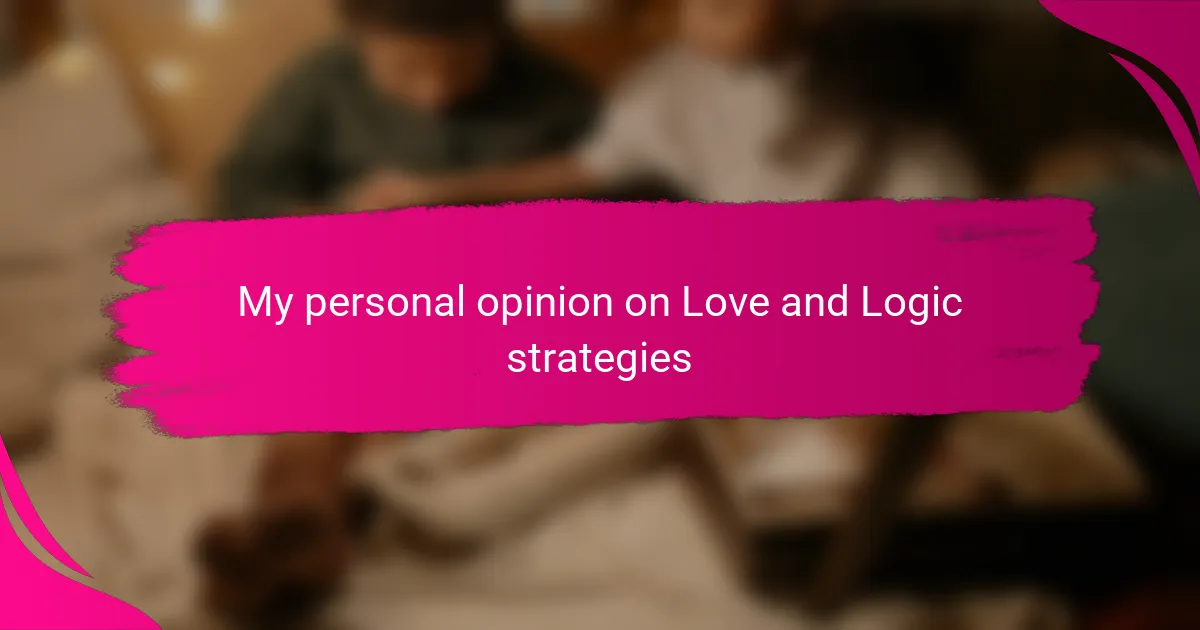Key takeaways
- Love and Logic parenting emphasizes a balance of empathy and structure, allowing children to learn from natural consequences while fostering mutual respect.
- Offering limited choices instead of strict commands encourages cooperation and empowers children to make decisions.
- Staying calm during challenging situations models emotional control, promoting a peaceful family environment.
- Flexibility and self-compassion are essential when adapting Love and Logic strategies to individual children’s needs.
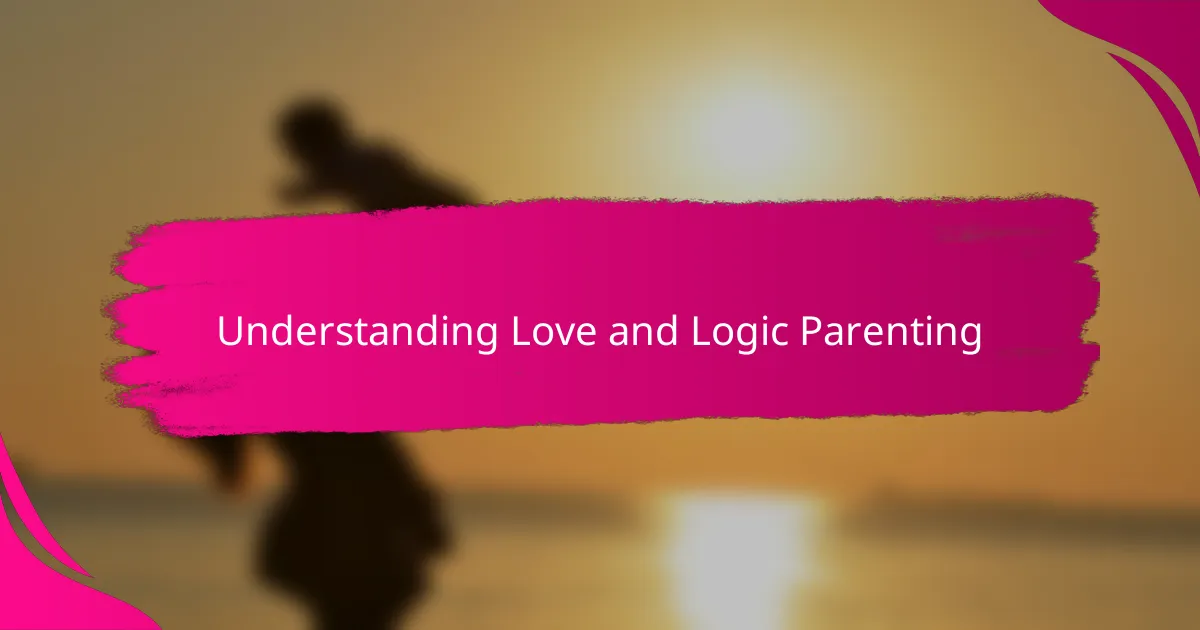
Understanding Love and Logic Parenting
When I first encountered Love and Logic parenting, what struck me was its blend of warmth and structure. It’s not about strict rules or empty affection, but about setting clear limits while showing empathy—something I hadn’t quite mastered before. Have you ever felt torn between wanting to guide your child firmly and wanting to be their safe emotional anchor? That tension lies at the heart of this approach.
I remember a moment when my own patience was running thin, and unexpectedly applying a Love and Logic strategy helped me step back instead of snapping. The idea of offering choices rather than ultimatums made me realize how much respect I was showing my child’s ability to make decisions. It felt empowering for both of us, and honestly, it changed the tone of our daily interactions.
What makes Love and Logic unique to me is its emphasis on natural consequences paired with compassionate support. It asks parents to balance kindness with responsibility, not by avoiding mistakes but by helping kids learn from them in a caring way. Isn’t that what we all want as parents—to raise children who feel both loved and capable?
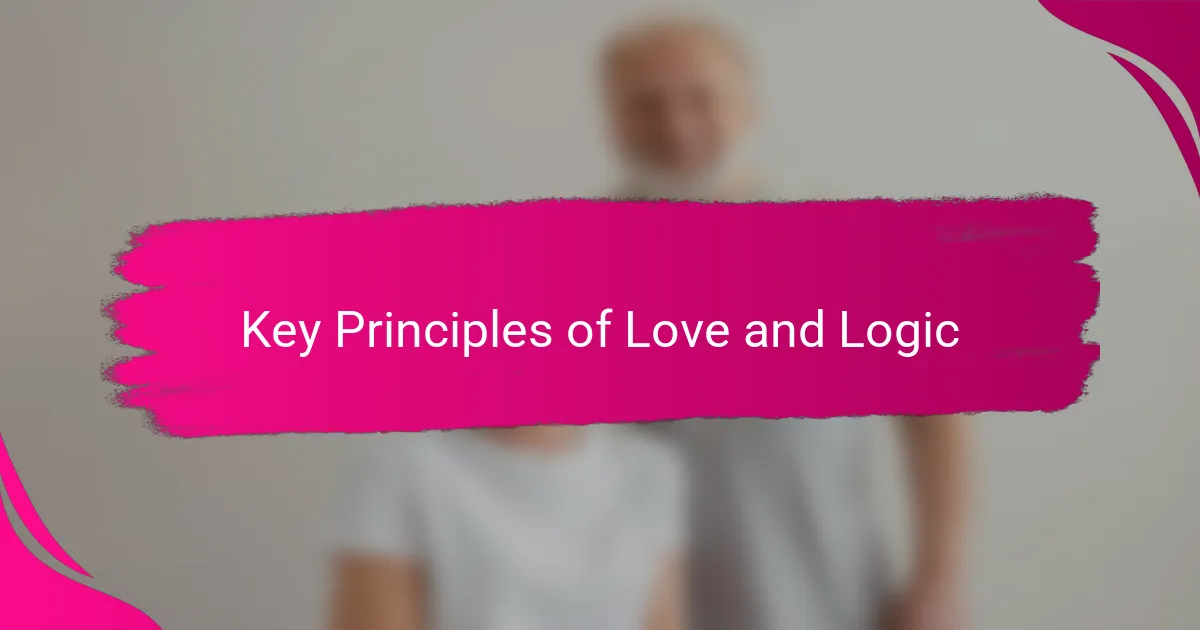
Key Principles of Love and Logic
One principle that really resonated with me is the idea that children learn best when they experience the natural consequences of their choices. Instead of shielding them from every mistake, Love and Logic encourages us to step back gently and let those lessons unfold. I remember feeling nervous the first time I let my child face the result of forgetting homework, but watching her take responsibility made me realize how important that trust was.
Another key aspect is offering compassionate choices rather than strict commands. This simple shift completely changed how my kids responded to guidance. When I started saying, “Would you like to wear the red shirt or the blue one today?” instead of “Put on your shirt now,” I noticed cooperation replaced resistance almost immediately. It felt like inviting respect instead of demanding it—and that felt powerful in our relationship.
Lastly, I appreciate how Love and Logic focuses on staying calm amidst chaos. Parenting can shake even the most patient souls, but this strategy reminds us that our own emotional control models stability for our children. I’ve seen firsthand how resisting the urge to react harshly during tense moments creates space for solutions instead of conflict. Isn’t that the kind of peace every family deserves?
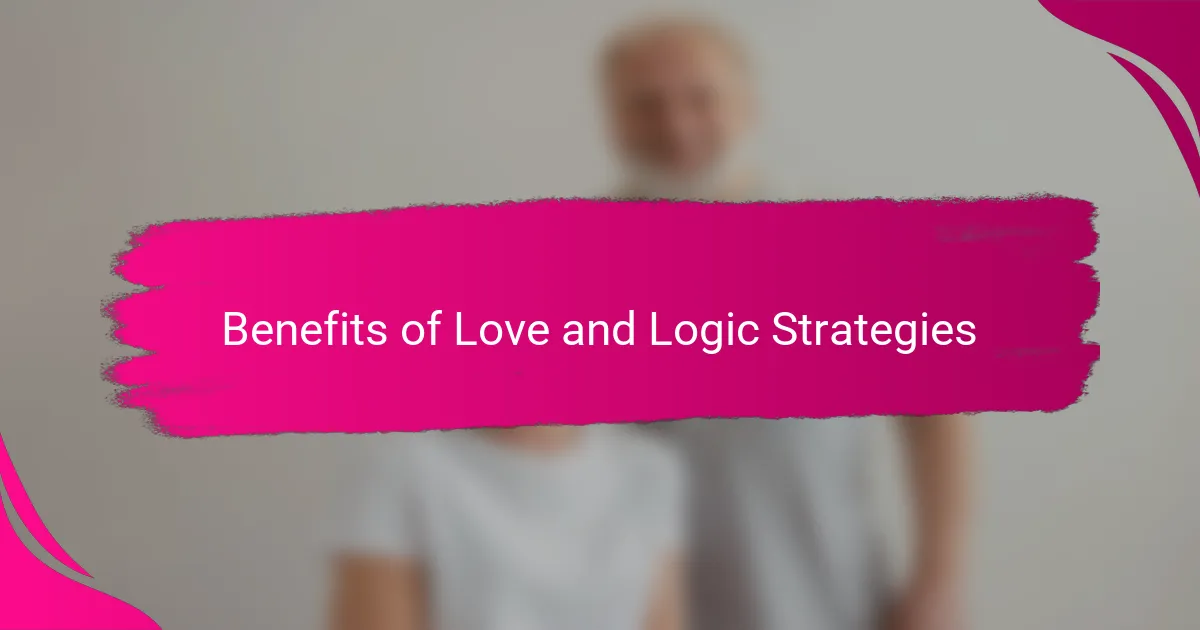
Benefits of Love and Logic Strategies
One of the biggest benefits I’ve experienced with Love and Logic strategies is how they foster mutual respect between me and my kids. Instead of feeling like a disciplinarian doling out orders, I became a partner in their decision-making. Have you ever noticed how kids respond better when they feel trusted? That shift made our conflicts shorter and softer.
I also found that empowering my children to face natural consequences helped build their confidence in real ways. There was a time when my son forgot his lunch repeatedly, and rather than rescuing him, I let him experience hunger at school. It was tough to watch, but the outcome was worth it—he started taking responsibility without my nagging. Doesn’t that kind of growth make the bumps along the way feel worthwhile?
What surprised me most is how Love and Logic strategies improved my own patience. The patience to listen, to offer choices, and to stay calm—even when deep down I wanted to react fast. That calm presence transformed not only my parenting but also how my children approached challenges. Isn’t it amazing how much peace a little patience can bring into a home?
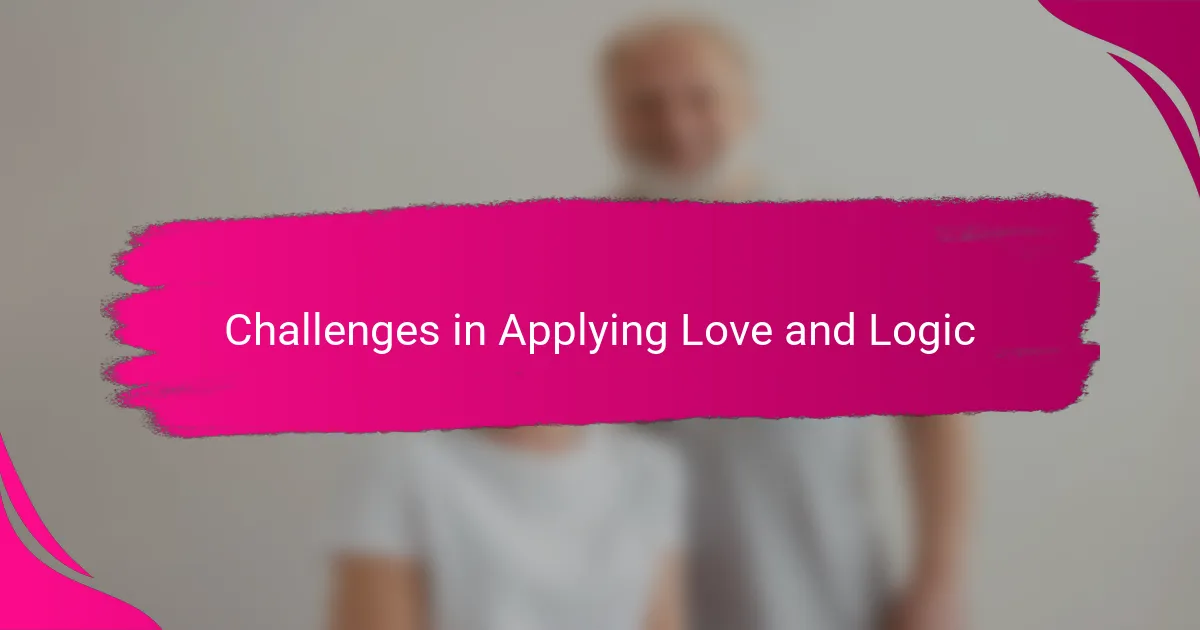
Challenges in Applying Love and Logic
Applying Love and Logic strategies isn’t always smooth sailing. I’ve found that one major challenge is resisting the temptation to step in and fix things immediately. When your child struggles or makes a mistake, it’s tough to watch without rushing to the rescue—even though that’s often the very thing Love and Logic advises against.
Sometimes, offering choices feels unnatural, especially on days when patience is running low. I remember a moment when I wanted to simply order my child to clean up, but paused and tried giving options instead. It felt awkward at first, and I questioned whether it really made a difference, yet the unexpected cooperation that followed reminded me why it’s worth the effort.
Another tricky part is staying calm amid real chaos. Love and Logic calls for emotional control, but I’m human—frustration and exhaustion sneak in. Have you ever noticed how easy it is to slip into yelling or lecturing when your own stress meter is high? It’s a constant practice to find that calm space, and some days it’s definitely harder than others.
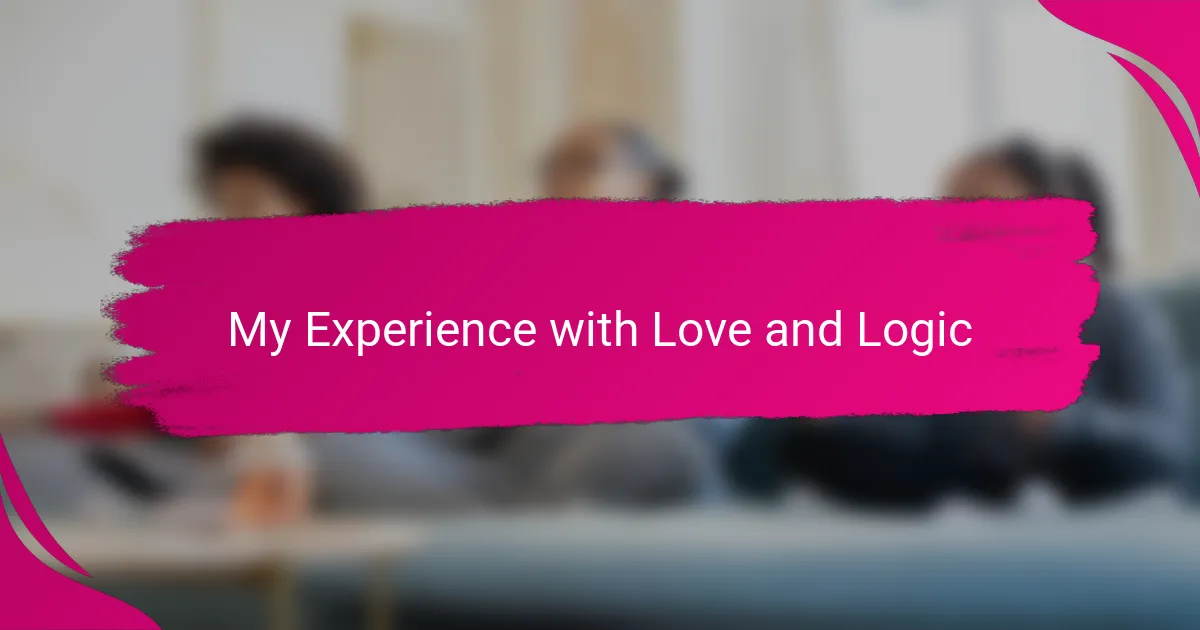
My Experience with Love and Logic
I’ve often reflected on how Love and Logic reshaped my approach to parenting, especially in moments when frustration threatened to take over. I recall one afternoon when my child refused to do homework, and instead of enforcing a stern deadline, I offered a choice: “Would you rather start now or after a quick break?” That simple question defused tension and made cooperation possible. Isn’t it remarkable how a small shift in language can change the entire dynamic?
There were definitely times I doubted whether stepping back and allowing natural consequences would be too harsh. But watching my daughter own up to forgetting her homework and then making a genuine effort to prepare the next day has been one of the most rewarding outcomes. It made me appreciate how trust and responsibility grow hand in hand in this process.
At the same time, I can’t deny that implementing these strategies tested my patience more than I expected. Staying calm while offering empathy, especially during intense moments, demanded a new level of self-awareness. I often asked myself, “Can I really stay composed and let this play out?” Gradually, I realized this calmness not only helped my children but also gave me a deeper sense of peace as a parent.
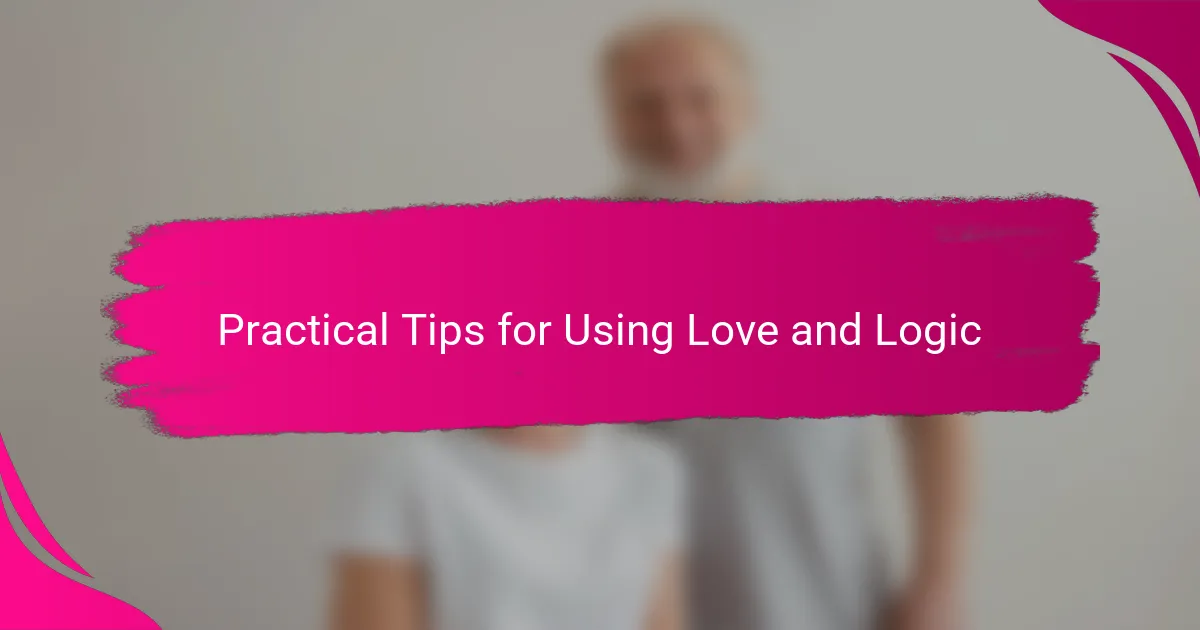
Practical Tips for Using Love and Logic
One practical tip I’ve found invaluable is to offer limited choices rather than open-ended options. For example, instead of asking, “What do you want to wear today?” I might say, “Would you like to wear the red shirt or the blue one?” This small change keeps decisions manageable for kids while still giving them a sense of control. Have you noticed how kids respond better when they feel their voice matters, even in simple matters? That sense of ownership really reduces power struggles.
Another thing that helped me was preparing myself emotionally before tough moments. I learned to pause, take a deep breath, and remind myself that staying calm models the behavior I want to see. It’s easier said than done, of course—especially when chaos erupts—but those few seconds create space for thoughtful responses instead of knee-jerk reactions. I often think back to one stressful bedtime when I was ready to lose my cool, but just breathing through it kept the night peaceful.
Lastly, I encourage letting natural consequences happen in safe ways. It was hard the first time I let my son face the fallout of forgetting his lunch, but stepping back showed me how much he could learn from experience rather than rescue. Of course, it’s about picking battles wisely and knowing when to step in. Have you had moments where giving space for consequences felt tough but ended up teaching a stronger lesson? Those moments, I find, build resilience and responsibility in ways words alone never could.
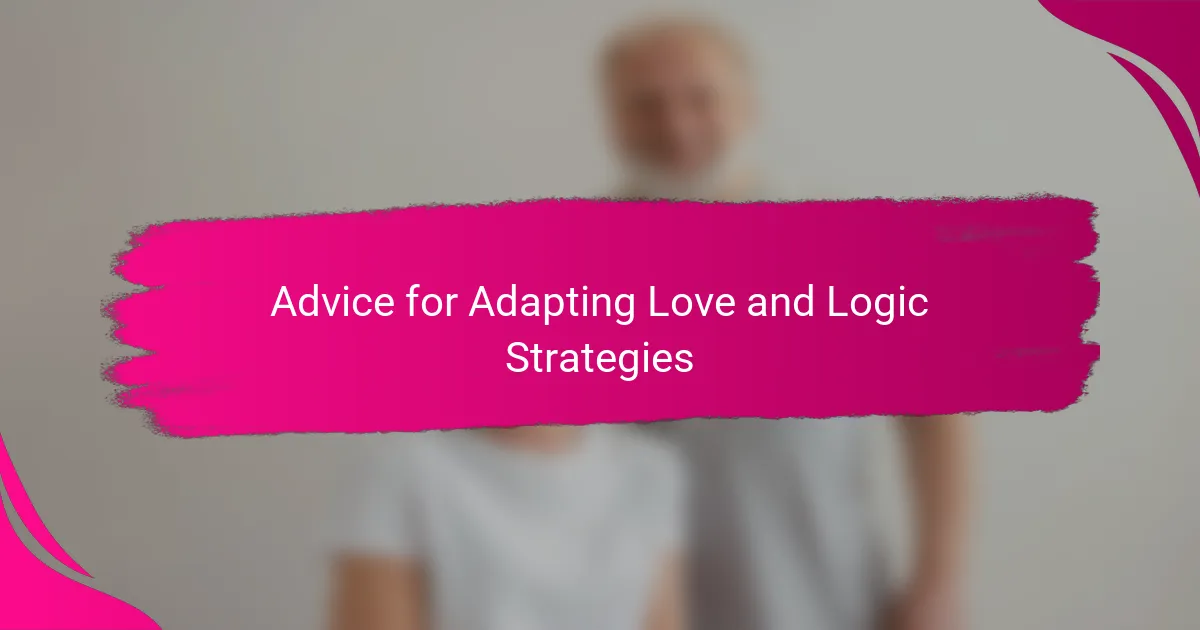
Advice for Adapting Love and Logic Strategies
Adapting Love and Logic strategies requires flexibility because no two children—or days—are exactly the same. I learned this through trial and error, realizing that sometimes what worked perfectly on Monday didn’t fit as well by Thursday. Have you found yourself tweaking your approach because your child’s mood or the context called for a softer touch or firmer boundary? That adaptability is key to keeping Love and Logic both effective and heartfelt.
One piece of advice I’d give is to start small with offering choices, especially if it feels unfamiliar or awkward. I remember fumbling through my first attempts, wondering if my child even noticed the difference. But over time, those small shifts became natural, and I noticed less resistance and more cooperation. Isn’t it amazing how something as simple as a choice can transform a power struggle into a shared decision?
Lastly, don’t underestimate the power of self-compassion while adapting these strategies. There were days I struggled to stay calm or to hold back from rescuing too quickly—and that’s okay. Love and Logic is as much about growing as a parent as it is about guiding your child. When you forgive yourself for imperfection, you model the very patience and understanding you wish to nurture in your kids. Have you experienced how that gentle self-awareness changes the whole parenting journey? I certainly have.
